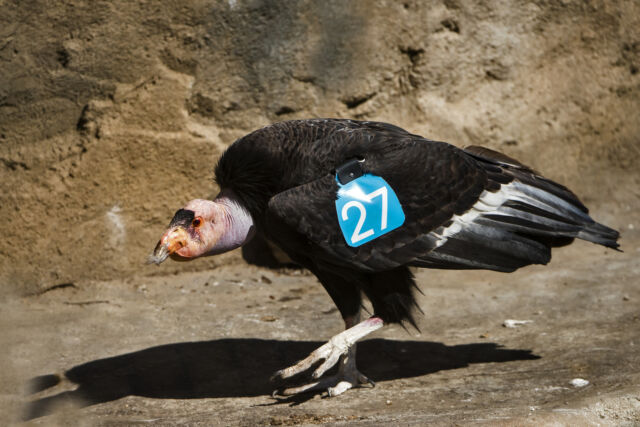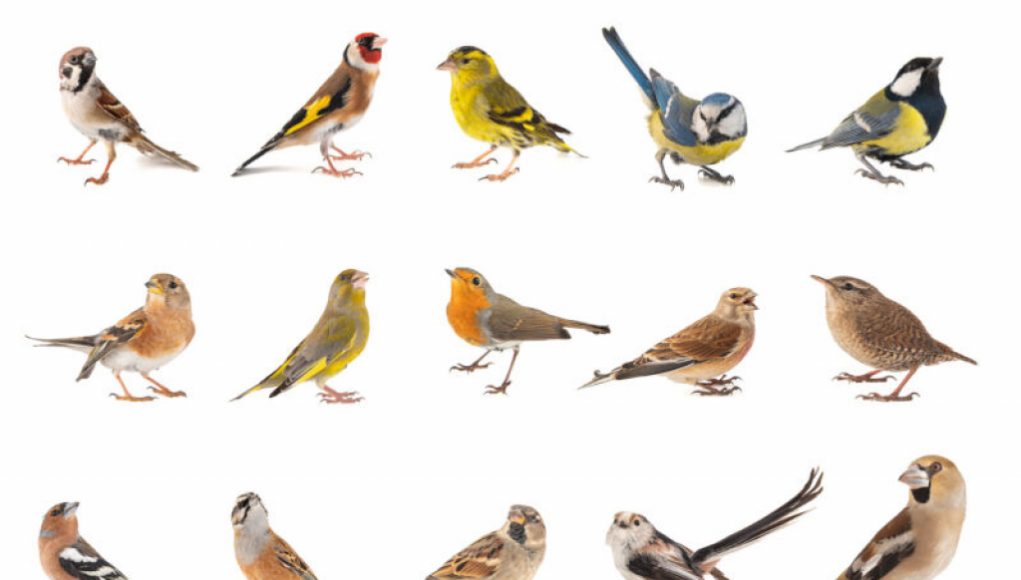Birds are everywhere, from the Arctic Circle to the depths of the ocean. They come in all shapes and sizes, making them easy to identify and fun to observe. And with millions of sightings recorded by amateur birdwatchers every year, there’s no shortage of data on these fascinating creatures.
But all that monitoring has revealed some troubling trends. Studies suggest that North America has lost a third of its birds in the last 50 years, and most bird species are in decline. This is a call to action, says conservation biologist Peter Marra, as birds are indicators of environmental health and the well-being of other species.
But it’s not all bad news. Some bird species are increasing in number, and dozens have been saved from extinction. Understanding both the declines and the success stories can help inform efforts to protect birds and other species.
Citizen scientists play a crucial role in bird monitoring, participating in events like the Great Backyard Bird Count and the North American Breeding Bird Survey. Longitudinal recordings have revealed signs of distress, with grassland birds suffering from habitat loss and pesticide use. Declines are widespread among many common and abundant species that play important roles in food webs.
The situation is not limited to North America, with reports of declining bird populations coming in from Europe, South Africa, the Amazon, and India. In an attempt to synthesize research from across the world, conservation biologist Alexander Lees and his colleagues published a comprehensive picture of global changes in bird abundance. The results are sobering: more species are declining than increasing, and we’re currently not succeeding in halting the loss of global bird biodiversity.Advertisement

Silver linings
Although bird surveys reveal a downward slide in many populations, there are some hopeful signs. Wetland species in North America have grown by 13 percent since 1970, according to a 2019 Science study, led by a 56 percent rise in waterfowl numbers. The paper credits billions of dollars allocated to the protection and restoration of wetlands, often for the sake of hunting. In India, 14 percent of assessed bird species have been growing in abundance. These successes show that it is possible to reverse population declines.
Philip McGowan, a conservation scientist at Newcastle University in the UK, says there are plenty of examples of birds that have been saved from extinction by people. He and his colleagues made a list of bird and mammal species that were listed as endangered or extinct in the wild on the IUCN Red List at any point since 1993. For each species, they collected as much information as they could about population trends, pressures driving the species to extinction, and key decisions or actions taken to protect them. The researchers were able to definitively link conservation efforts with species survival for some birds, such as the Spix’s macaw and the California condor. Overall, the researchers reported in 2020 that as many as 48 species of birds and mammals were saved from extinction between 1993 and 2020. The number of extinctions, the calculations showed, would have been three or four times higher or more without human intervention.
Forging ahead
In 2020, the year after Marra and colleagues reported a loss of nearly a third of North American birds, they partnered with several conservation groups to launch the Road to Recovery Initiative. The project has identified 104 species of birds in the United States and Canada that need immediate help and, of those, 30 that are highly vulnerable to extinction because of extremely small population sizes or precipitous declines.
For each species, Marra says, it will be important to learn what’s behind their shrinking populations. Currently, he says, “We’re not approaching conservation from a species perspective. And people are nervous about doing that … they view it as being just too difficult. But I maintain that we can figure it out, just like we’ve done with … all the species that almost disappeared because of DDT. We have the power and the understanding with new science and with new quantitative skills to identify the causes of decline and to figure out how we can eliminate those.”
It will take political will to set aside resources and enact widescale changes, such as reducing chemical use on farms, Lees says. Saving more birds, he adds, would ideally entail focusing as much energy on woodlands and agricultural areas as governments have allocated to wetlands, as well as implementing conservation measures well before the point where a species is about to disappear. “What we’re not succeeding at doing,” he says, “is stopping lots of species from getting rarer.”
Policies need to acknowledge the interests of local communities, adds McGowan. That’s a key focus of a new international agreement that was forged at the end of 2022, when representatives from 188 governments met in Montreal for the United Nations Biodiversity Conference (COP15) and adopted a set of measures to stop biodiversity loss, restore ecosystems and protect Indigenous rights.
Involving local people can benefit biodiversity while respecting communities, McGowan says. In South America, for example, the yellow-eared parrot nearly went extinct, in part because people decimated palm groves, which are prime nesting habitats for the birds, to use the fronds in Palm Sunday processions. Successful conservation actions have included a community outreach campaign that encouraged people to stop cutting down wax palms and cease hunting the parrots. In 2003, the head of Colombia’s Catholic church halted a 200-year-old Palm Sunday tradition involving wax palms, and parrot numbers have since increased. “Working with local people meant that threat could be reduced,” McGowan says. Conservation, he says, should target the species that need action most urgently while ensuring that local people are not disenfranchised.
Better population estimates would help to inform conservation efforts, says Corey Callaghan, a global ecologist at the University of Florida in Davie. As it stands, wide margins of error are a problem, in part because estimating abundance is challenging and the sampling data are full of biases. Large birds are overrepresented in some rnrnDiscovering the different types of citizen science data is a fascinating topic, as revealed in a recent study by Callaghan. However, there are limitations to the data collected by citizen scientists, as Marra points out. For example, contributors to the North American Breeding Bird Survey only observe birds during the day, which means they miss out on nocturnal birds, marshland birds, and birds that live in untouched landscapes. But fear not, as Callaghan suggests that understanding and accounting for these biases could lead to better estimates. In fact, inaccurate counts can be quite significant, as demonstrated by the total estimates of Asian dowitchers, which ranged from 14,000 to 23,000 until a survey in 2019 tallied over 22,000 of the birds on a single wetland in eastern China. To accurately assess changes, researchers need accurate baseline estimates, which is why Callaghan advocates for more open sharing of databases and integration of observations collected by researchers and citizen scientists. After all, if we want to preserve our environment, we need to understand how much we have and how much we’re losing. But don’t despair, as Lees reminds us that conservation efforts have saved rare species from extinction and reversed declines in once-common species. So let’s remain optimistic and continue to work towards a better future.
The number of bird populations around the world has been rapidly declining over the past decade, an alarming trend that has endangered species and sparked concern among environmentalists and wildlife conservationists.
A new report by BirdLife International, a global bird conservation organization, has revealed that nearly one-third of all bird species are facing extinction due to environmental factors like climate change, pollution, and changes in land use. These changes have caused a dramatic drop in the abundance of bird species, with an estimated 10 percent overall decrease being seen since 1990.
The report also highlights the fact that much of the problem can be attributed to human activities. Development and land conversion for agriculture or urbanization have destroyed or fragmented bird habitats, thus limiting the chances of survival. The destruction of wetlands, meadows, forests, and grasslands has been especially detrimental, with many species dependent on these areas for their food and nesting grounds.
In addition, others species have been adversely impacted by the demand for food, materials, and energy, with industrial or commercial fishing, logging, and burning of fuels affecting both the environment and the bird population. Some bird populations are also affected by competition from invasive species.
Climate change has been an especially tough factor on birds, as it brings about longer droughts and wild fluctuations in temperature. These changes can affect the reproductive cycles of birds, as well as their migration habits. Warmer temperatures are linked to increased energy consumption, which often hot habitats and decreases in food sources for the birds.
Given the alarming rate of decline in bird populations, the report urges for more concerted efforts and increased investment to protect existing bird species and rebuild their habitats. Governments must put in place laws that protect birds and their habitats while also enforcing responsible land and resource management.
It is important for everyone to understand the seriousness of the decline of bird populations and the risk it poses to biodiversity, and take the necessary steps to preserve these vital species. With appropriate action taken, we can ensure that future generations will be able to enjoy nature’s creatures for years to come.




















